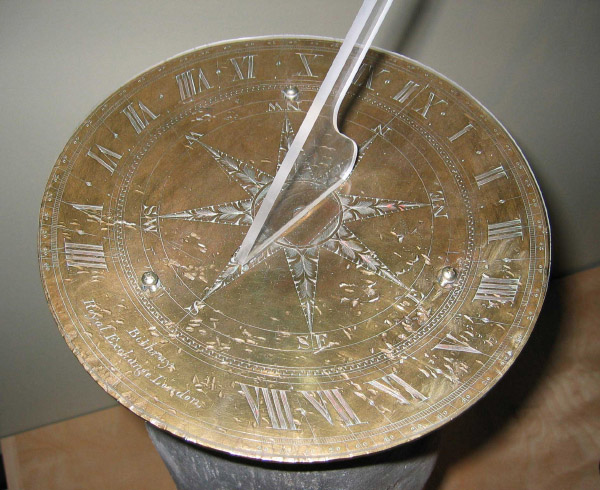The brass sundial was sent to Devon Mission by the noted English explorer Sir John Franklin and his wife, Lady Jane Franklin, c. 1845. Franklin led two overland expeditions in search of the fabled Northwest Passage, each of which brought him through the site known as Opasquia, (now The Pas), once in 1819 and again in 1825. This small “island of civilization” amid the wilderness impressed Franklin, and later he and his wife sent the sundial as a gift to the Church of England Mission at the site. (Franklin later perished with all of his men on his final sea voyage to confirm the existence of a northwest passage across the top of what is now Canada.)
The sundial was located in Devon Park on the riverside for many years. Its eventual vandalism and the disappearance of the gnomon necessitated a move to the Museum where the sundial is on permanent exhibit.
Early local citizen R. H. Bagshaw recalled about the sundial: “On August 31 (1908) I went to see two men at Mr. Nicholl’s boarding house…students of the Carnegie Terrestrial Magnetic Department in Washington USA, to ask them if they would set up the sundial at the old Mission House, which had fallen down near the flagpole in Devon Park. They expressed their willingness and pleasure to have the privilege. It (the sundial) was of real value to past generations in giving the time of day, but is no longer required for that purpose. It naturally does not agree with railway time, (there is a difference of over 20 minutes, I believe), but it is a relic of the past and is a reminder that time has not always been calculated by clocks and watches.”


